If you’ve ever considered a career as a teacher in the United States, it’s important to understand the path ahead. In this article, we’ll explore the various steps and opportunities that make up the career path for teachers in the USA. From gaining the necessary education and credentials to navigating the job market, we’ll provide you with a comprehensive overview of what it takes to become a successful teacher in America. Whether you’re a student contemplating your future or someone looking to make a career change, this article will provide valuable insight into the exciting world of teaching in the USA. So, let’s get started on this educational journey together!
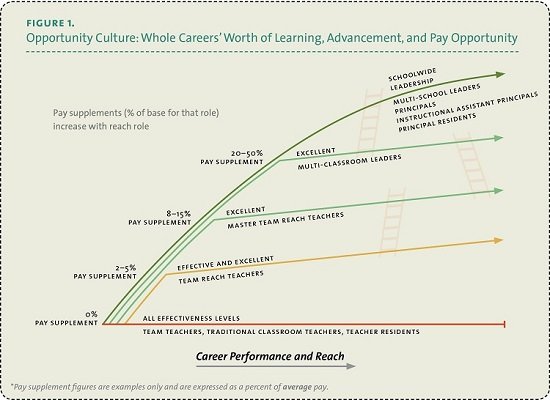
This image is property of opportunityculture.org.
1. Education requirements for teachers in the USA
To become a teacher in the United States, there are several education requirements that you must meet. The first requirement is to obtain a Bachelor’s degree. Many aspiring teachers choose to pursue a Bachelor’s degree in Education, although it is also possible to major in a specific subject and then complete a teacher preparation program.
Once you have obtained your Bachelor’s degree, you will need to obtain state certification in order to teach in a public school. This typically involves passing a series of exams to demonstrate your knowledge of teaching methods and subject matter. Each state has its own specific requirements for certification, so it is important to familiarize yourself with the requirements of the state in which you plan to teach.
While a Bachelor’s degree and state certification are the minimum requirements to become a teacher, many educators choose to pursue a Master’s degree or higher in their area of specialization. A Master’s degree can provide you with a deeper understanding of your subject area and can also open up opportunities for career advancement.
2. Teaching certifications and licensure
There are several types of teaching certifications available in the United States. The most common type is a teaching license, which is issued by the state in which you plan to teach. In order to obtain a teaching license, you will need to meet the specific requirements of your state, which may include passing exams, completing a teacher preparation program, and fulfilling certain coursework requirements.
Some states also offer alternative certification programs for individuals who have a Bachelor’s degree in a subject other than education. These programs typically provide a way for individuals to become certified teachers without having to complete a full teacher preparation program. Alternative certification programs often involve a period of mentoring and supervised teaching to ensure that candidates are prepared for the classroom.
In addition to state certifications, there are also national certifications available for teachers who wish to demonstrate their expertise in their subject area. The National Board Certification is a highly respected certification that is recognized across the country. Obtaining national board certification involves completing a rigorous assessment process that evaluates a teacher’s knowledge and skills.
States also have reciprocity agreements in place, which means that if you hold a teaching license in one state, you may be able to transfer your license to another state without having to complete additional requirements. The specific requirements for reciprocity vary by state, so it is important to research the specific requirements of the state where you plan to teach.
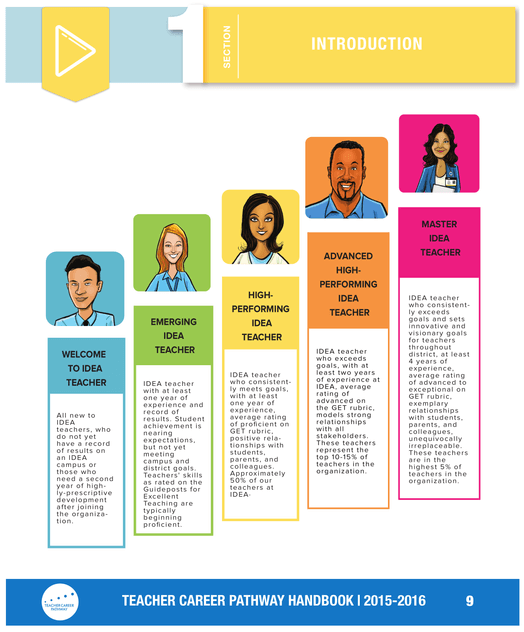
This image is property of com.jobing.static.s3.amazonaws.com.
3. Preparing for a teaching career
Before embarking on a career in teaching, it is important to carefully consider your specialization. There are a variety of teaching specializations to choose from, including early childhood education, elementary education, secondary education, special education, physical education, and English as a second language (ESL). Each specialization requires a unique set of skills and knowledge, so it is important to choose a specialization that aligns with your interests and strengths.
To pursue a career in teaching, you will need to earn a Bachelor’s degree in Education or in your chosen subject area. Many colleges and universities offer programs specifically designed for aspiring teachers, which provide a combination of coursework and practical experience in the classroom. It is important to choose an accredited program to ensure that you receive a high-quality education that meets the standards set by the education profession.
Gaining practical experience through student teaching is an essential part of preparing for a teaching career. Student teaching involves working in a classroom under the supervision of an experienced teacher, allowing you to gain hands-on experience and apply the knowledge and skills you have acquired through your coursework. Student teaching provides an opportunity to observe effective teaching strategies, develop your own instructional techniques, and build relationships with students.
4. Entry-level teaching positions
As a new graduate, there are several entry-level teaching positions that you may consider. An assistant or paraprofessional teacher position involves providing support to a lead teacher in the classroom. This may include helping with lesson preparation, assisting with classroom management, and working with individual students or small groups.
Another entry-level position is that of a substitute teacher. Substitute teachers are responsible for filling in when the regular classroom teacher is absent. This can provide valuable experience and exposure to different grade levels and teaching styles.
Teaching aide positions are also common entry-level positions in the field of education. Teaching aides work under the guidance of a lead teacher to provide additional support in the classroom. They may assist with administrative tasks, provide one-on-one support to students, or help with lesson delivery.
These entry-level positions can be a stepping stone to a full-time teaching position, allowing you to gain valuable experience and build relationships within the school community.
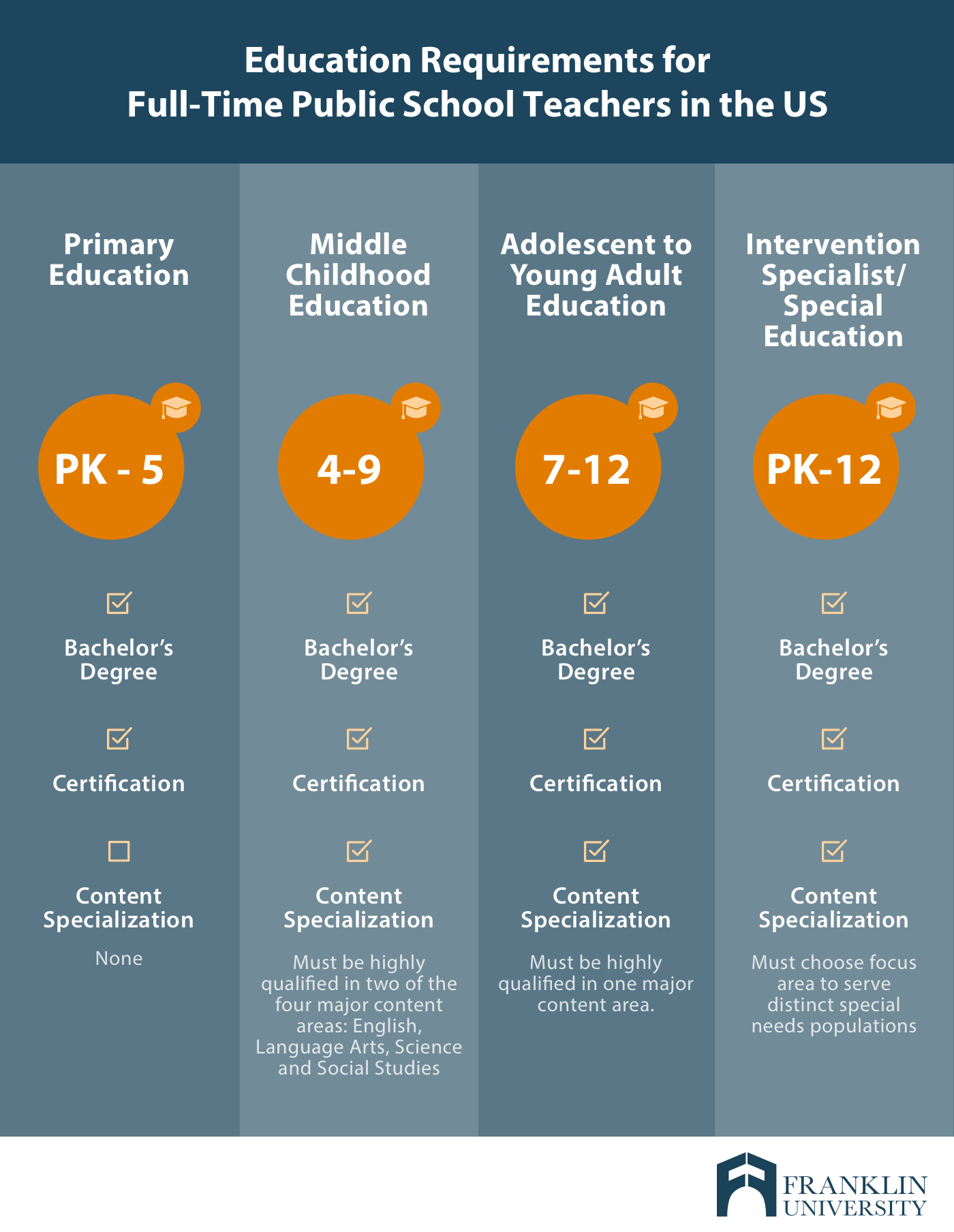
This image is property of www.franklin.edu.
5. Advancing in the teaching profession
Once you have gained some experience as a teacher, there are several options for advancing in your career. One option is to earn a Master’s degree in Education or in your subject area. A Master’s degree can provide you with a more in-depth understanding of teaching strategies, research-based practices, and educational theories. It can also open up opportunities for higher salaries and positions of leadership within the field of education.
Obtaining national board certification is another way to advance in the teaching profession. National board certification is a rigorous certification process that demonstrates a teacher’s advanced knowledge and skills in their subject area. It is a highly respected certification that can enhance your professional credibility and open up additional career opportunities.
Pursuing leadership roles within the education system is yet another option for advancement. This could include becoming a department chair, instructional coach, curriculum specialist, or school administrator. These roles allow you to have a broader impact on education by leading and supporting other teachers, developing curriculum, and shaping educational policy.
6. Specializations and career options for teachers
Teaching offers a wide range of specializations and career options. One specialization is early childhood education, which focuses on teaching young children, typically from birth to age five. Early childhood educators play a crucial role in a child’s development during these formative years.
Elementary education is another specialization that focuses on teaching children in elementary school, typically ranging from kindergarten through sixth grade. Elementary educators often teach multiple subjects and have a significant impact on a child’s learning foundation.
Secondary education is the specialization for teaching students in middle school or high school, typically ranging from seventh grade through twelfth grade. Secondary educators typically focus on teaching specific subjects, such as math, science, English, or history.
Special education is a specialization that involves working with students who have special needs and require additional support and accommodations. Special education teachers help these students reach their full potential by adapting instruction and providing individualized support.
Physical education teachers focus on promoting physical fitness and educating students about the importance of an active and healthy lifestyle. Physical education classes provide opportunities for students to develop skills in sports and physical activities.
Teachers who specialize in English as a second language (ESL) work with students who are learning English as their second language. These teachers provide support and instruction to help students develop their English language skills and succeed academically.
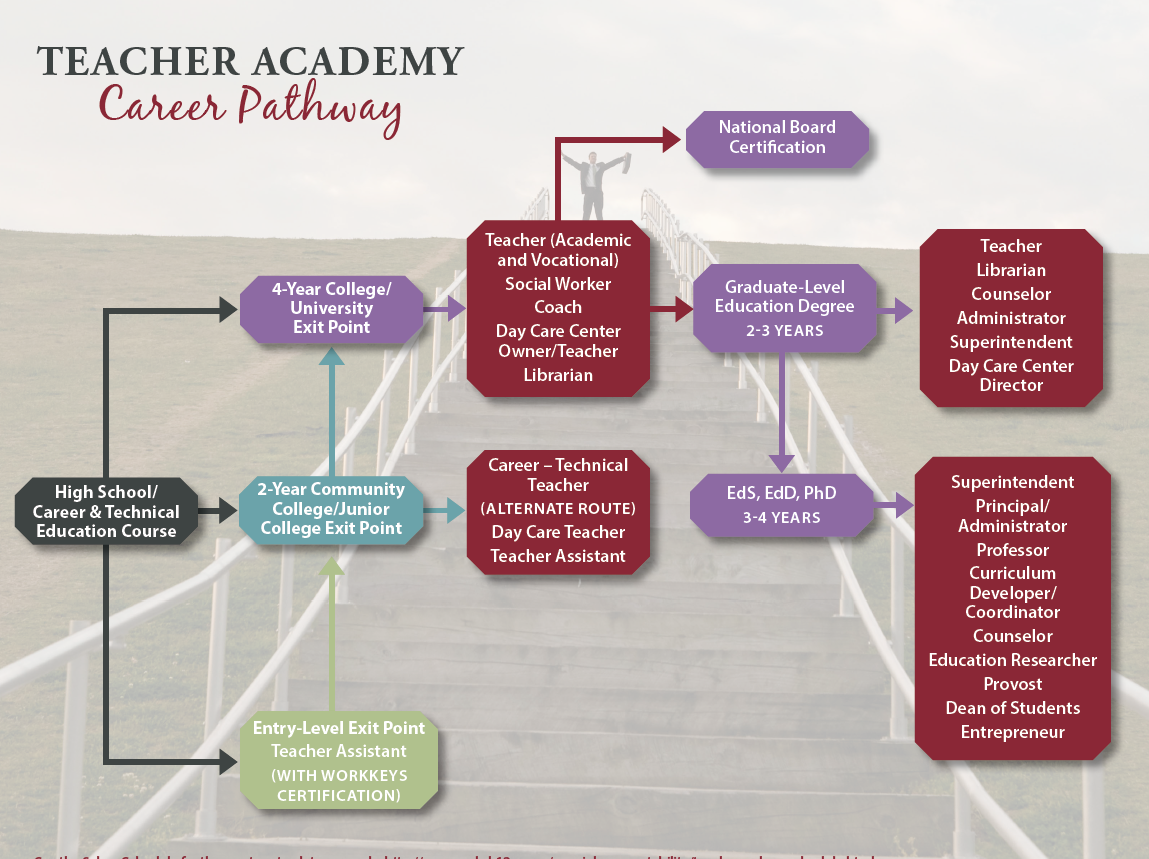
This image is property of 3.files.edl.io.
7. Continuing education and professional development
Continuing education and professional development are essential aspects of a teaching career. As an educator, it is important to stay updated with the latest teaching methods and technologies to provide the best possible education for your students.
Most states have continuing education requirements for teachers, which typically involve completing a certain number of professional development hours or credits over a specified period of time. These requirements ensure that teachers stay current with educational trends and best practices.
There are numerous professional development opportunities available to teachers, including workshops, conferences, and online courses. These opportunities allow you to learn from experts in the field, exchange ideas with other educators, and gain new insights and strategies to enhance your teaching.
Staying updated with the latest teaching methods and technologies is important because it allows you to better meet the needs of your students and deliver effective instruction. Technology, in particular, plays an increasingly important role in education, and it is essential for teachers to integrate technology into their classrooms to enhance student learning and engagement.
8. Challenges and rewards of a teaching career
A teaching career is not without its challenges, but it can also be incredibly rewarding. One of the main challenges that teachers face is classroom management. Managing a classroom of diverse students with different abilities, backgrounds, and learning styles can be complex and demanding. However, with effective strategies and strong relationships with students, classroom management challenges can be overcome.
Meeting the diverse needs of students is another challenge that teachers encounter. Each student comes to the classroom with their own set of strengths, weaknesses, and individual needs. It is the teacher’s responsibility to differentiate instruction and provide appropriate support to ensure that each student has the opportunity to succeed.
Despite the challenges, a teaching career offers countless rewards. One of the most rewarding aspects of being a teacher is the impact that you can have on students’ lives. As a teacher, you have the opportunity to inspire, guide, and empower your students, helping them develop the knowledge, skills, and confidence they need to achieve their goals.
A teaching career also offers opportunities for personal and professional growth. The field of education is constantly evolving, and as a teacher, you have the opportunity to continue learning and developing your skills throughout your career. Every day in the classroom provides an opportunity for growth and learning, both for your students and for yourself.
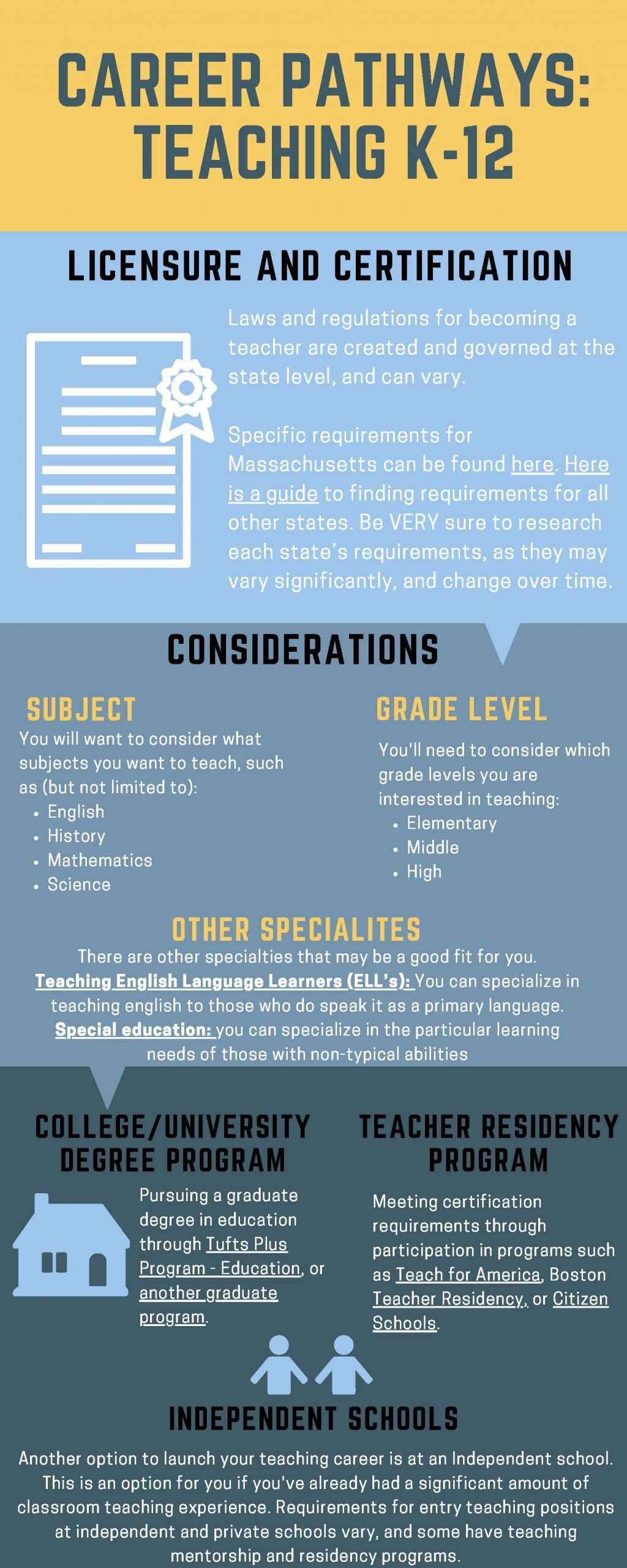
This image is property of cdn.careers.tufts.edu.
9. Salary and benefits for teachers in the USA
When considering a career as a teacher, it is important to understand the salary and benefits that come with the profession. The average salary range for teachers in the United States varies depending on factors such as location, level of education, and years of experience. Generally, salaries range from around $40,000 to $60,000 per year, with opportunities for higher salaries as you gain experience and advance in your career.
In addition to salary, teachers often receive benefits such as health insurance, retirement plans, and paid time off. The specific benefits offered can vary by school district and state, so it is important to research the benefits package offered in your area.
It is worth noting that salaries for teachers can vary significantly depending on the level of education and experience. Teachers with a Master’s degree or higher and several years of experience often earn higher salaries than those with a Bachelor’s degree and minimal experience.
10. Career advancement beyond teaching
While many teachers choose to remain in the classroom throughout their careers, there are also opportunities for career advancement beyond teaching. One option is to become an education administrator, such as a principal or superintendent. Education administrators are responsible for overseeing the operations of a school or school district and ensuring that students receive a high-quality education.
Another career option is curriculum development and instructional design. This involves creating curriculum materials, developing instructional strategies, and designing assessments to enhance student learning. Curriculum developers and instructional designers work closely with teachers to ensure that curriculum aligns with educational standards and meets the needs of students.
Education consulting is another career path that teachers can pursue. As an education consultant, you would work with schools, districts, or educational organizations to provide expertise and guidance on various aspects of education, such as curriculum development, teacher training, or educational policy.
Lastly, some teachers choose to become teacher training and professional development specialists. In this role, you would provide training and support to other educators, helping them enhance their teaching skills and knowledge. This can involve conducting workshops, coaching teachers, or developing and implementing professional development programs.
In conclusion, a career in teaching offers a rewarding and fulfilling path for individuals who have a passion for education and a desire to make a positive impact on the lives of students. By fulfilling education requirements, pursuing specialized certifications, and continuing professional development, you can embark on a successful teaching career that offers endless opportunities for growth and advancement. Whether you choose to remain in the classroom or pursue career opportunities beyond teaching, the field of education offers a wealth of possibilities.